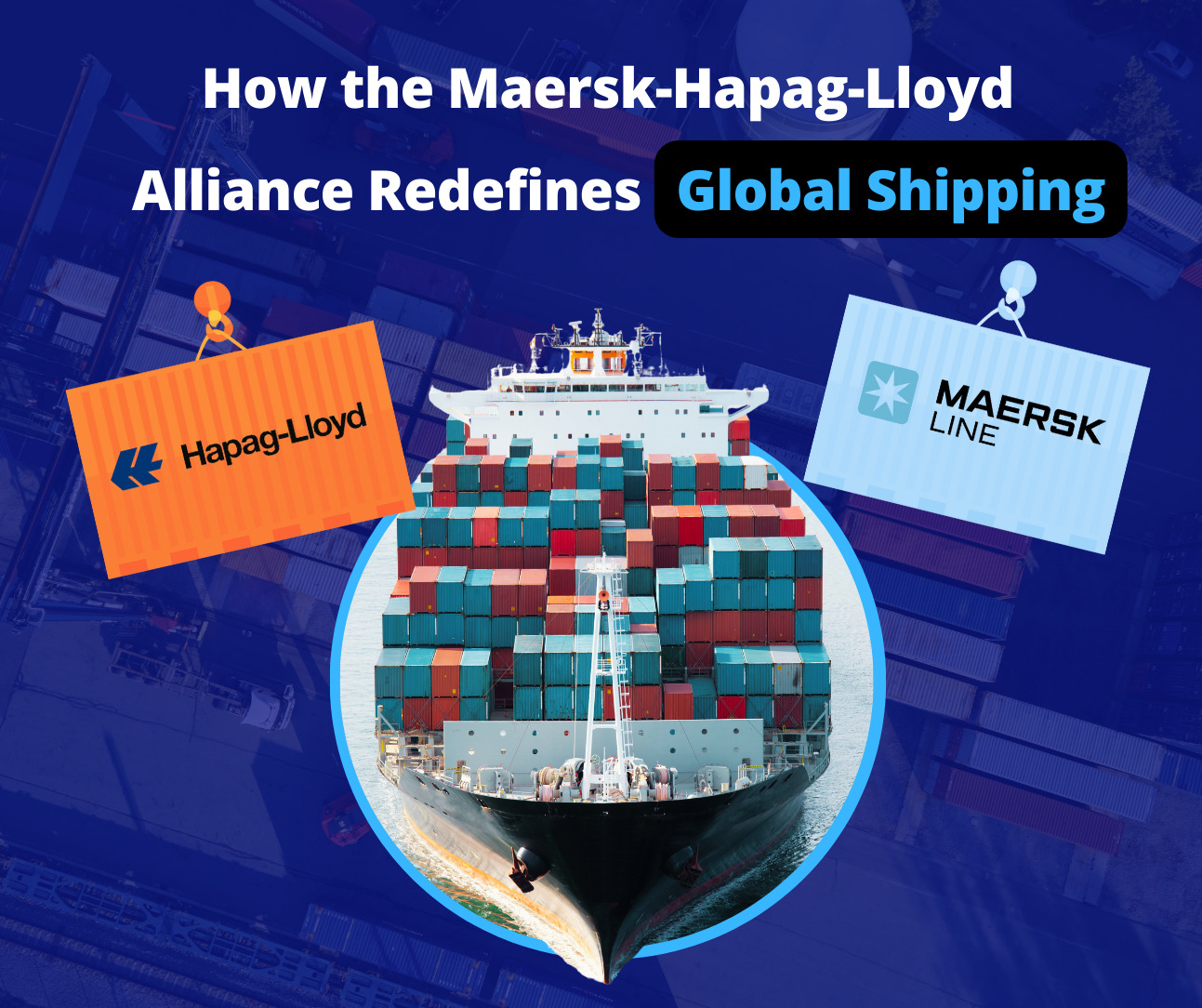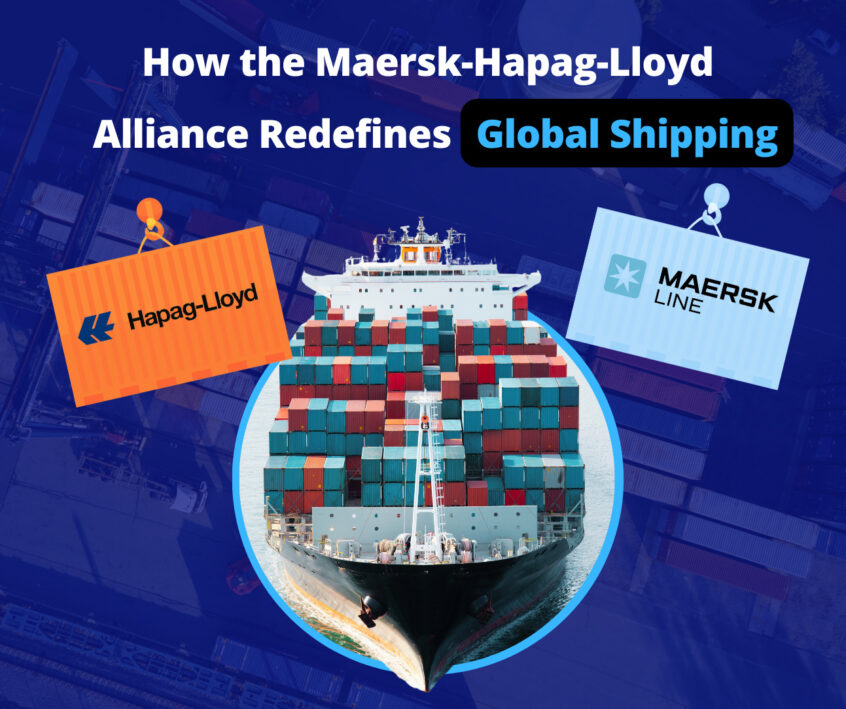
Reinventing Maritime Logistics in the Maersk-Hapag-Lloyd Alliance
In an era marked by rapid global trade and transportation changes, the alliance between Hapag-Lloyd and Maersk stands as a transformative moment in maritime logistics. This strategic partnership, poised to manage a staggering 3.4 million TEU (Twenty-Foot Equivalent Units), is set to redefine efficiency, reliability, and sustainability in container shipping. This article explores the multifaceted implications of this alliance to paint a comprehensive picture of its potential impact on the logistics industry.
Transforming Schedule Reliability
Inconsistent schedules have long plagued the shipping industry. Pre-pandemic data from Sea Intelligence indicated that the global average for on-time performance was about 75%. However, this figure plummeted dramatically after COVID-19 disruptions, with some carriers experiencing on-time performance as low as 35% by mid-2021.
Companies like Ocean Network Express (ONE) are integrating Artificial Intelligence (AI) into their vessel management systems. For instance, ONE’s use of AI to predict the most fuel-efficient routes has reduced emissions and improved punctuality. By accurately forecasting weather conditions and sea currents, AI allows for adjustments in sailing schedules, significantly minimizing delays. Other innovative ways of addressing the problem have emerged:
- Real-Time Tracking and Analytics
Global logistics leader DHL has implemented advanced real-time tracking systems for their shipments. This technology provides precise location data and estimated arrival times, enabling customers to plan their inventory and operations more effectively. Integrating Internet of Things (IoT) devices into cargo handling has also enhanced the accuracy of shipment tracking, further improving schedule reliability.
- Port Collaborations for Smoother Turnarounds
In ports like Rotterdam, collaborative initiatives between port authorities, shipping companies, and local governments have enhanced schedule reliability. For instance, the port’s implementation of a “Port Call Optimization” program, where data on ship arrivals and departures is shared in real-time among all stakeholders, has significantly reduced waiting times and improved schedule adherence.
- Standardization of Processes
The International Maritime Organization (IMO) has been pivotal in setting global standards for shipping operations. The enforcement of consistent rules and regulations across different jurisdictions helps streamline processes, thus reducing the likelihood of delays caused by regulatory discrepancies.
- Innovations in Vessel Design
Shipping companies have invested in larger vessels carrying more containers per voyage. For example, Maersk’s E-class vessels, each with a capacity of over 15,000 TEU, have significantly reduced the number of trips required for the same cargo volume, leading to more predictable schedules.
- Advanced Hull Designs for Speed and Stability
Innovations in hull design, as seen in the CMA CGM Group’s new fleet of LNG-powered vessels, contribute to sustainability and enhance speed and stability in various sea conditions. This results in faster transit times and better adherence to schedules.
- Automation in Cargo Handling
The introduction of automated guided vehicles (AGVs) and automated cranes in ports like Singapore has revolutionized cargo handling. This automation reduces the time ships spend in port, allowing quicker turnarounds and more reliable scheduling.
- Improved Intermodal Connections
Efficient intermodal connections at ports ensure the quick transfer of containers to trucks, trains, or barges. For instance, the Port of Hamburg’s Altenwerder terminal boasts a highly efficient rail terminal directly adjacent to the container terminal, significantly speeding up cargo transfers and enhancing schedule reliability for onward inland transportation.
Overall, transforming schedule reliability in the logistics industry involves technological advancements, collaborative efforts, innovative vessel designs, and enhanced port operations. These examples from leading industry players and global ports highlight the dynamic strategies employed to achieve more predictable and reliable shipping schedules, ultimately contributing to the overall efficiency and effectiveness of global supply chains. One of the recent examples is the Gemini Cooperation.
Gemini Cooperation: A Benchmark in Reliability
Starting in February 2025, the Gemini Cooperation aims to revolutionize this scenario. With a combined fleet of 290 vessels, the alliance targets a 90% schedule reliability rate, starkly contrasting the current industry average of around 60%. This commitment to punctuality promises significant improvements in supply chain predictability and efficiency. There are many innovative ways in which the Gemini Cooperation aims to achieve its ambitious targets:
- Optimized Fleet Management: With the combined fleet, the Gemini Cooperation has the flexibility to optimize vessel deployment. This includes strategic allocation of ships based on route demand, balancing cargo loads more effectively, and reducing instances of underutilization or overcapacity. Optimized fleet management is key in minimizing delays caused by logistical mismatches.
- Advanced Route Planning: The alliance can anticipate and mitigate potential delays by leveraging advanced navigation and route planning technologies. Real-time data analytics enable the fleet to avoid congested ports and navigate through less turbulent sea routes, effectively ensuring adherence to schedules.
- Enhanced Communication and Coordination: A critical aspect of achieving high schedule reliability is the seamless communication and coordination between vessels, ports, and ground logistics. The Gemini Cooperation plans to establish integrated communication networks, ensuring that every supply chain segment is synchronized from departure to arrival.
- Proactive Contingency Management: The alliance also emphasizes proactive contingency planning. By analyzing historical data and current trends, the Gemini Cooperation can forecast potential disruptions and implement preemptive measures, such as rerouting ships or adjusting schedules in advance to maintain punctuality.
Implications for the Supply Chain
- Predictability in Supply Chain Planning: A 90% reliability rate significantly enhances the predictability in supply chain management. Businesses can plan their inventory and production schedules more confidently, reducing the need for buffer stocks and minimizing the risk of stockouts or overstocking.
- Efficiency in Logistics Operations: Increased schedule reliability streamlines the entire logistics process. It reduces the need for emergency measures like expedited, costly, and disruptive shipments. Consistent and dependable delivery times also allow for more efficient utilization of warehousing and distribution resources.
- Customer Satisfaction: In the end, the most tangible impact of high schedule reliability is on customer satisfaction. The ability to reliably predict delivery times is crucial in today’s fast-paced market. This reliability can enhance the reputation of businesses, leading to greater customer trust and loyalty.
The Gemini Cooperation’s 90% schedule reliability rate target is not just an ambitious goal—it’s a statement of intent to revolutionize maritime logistics. By significantly improving schedule reliability, this alliance is set to enhance the predictability and efficiency of the global supply chain, thereby setting a new industry standard for others to follow. This initiative marks a significant step towards a more resilient, efficient, and customer-focused logistics industry.
Key Indicators of Enhanced Operational Efficiency
- Streamlining Vessel Operations: In 2022, Maersk alone operated 708 vessels, while Hapag-Lloyd had a fleet of 241. The pooling of resources under this alliance enables optimal utilization of these assets. For example, the alliance can significantly enhance route efficiency by reducing duplicate sailings on popular routes like Asia-Europe, which saw a combined capacity of over 4 million TEU in 2023.
- Expanding Geographical Coverage: The alliance covers key trade lanes, including the lucrative Asia-North America route, where combined trade volume exceeded 15 million TEU in 2023. By leveraging their expansive network, the partners can offer more direct services and reduced transshipment needs, directly benefiting the shipping times and costs.
- Pioneering Sustainable Shipping Practices: Both companies have set ambitious decarbonization targets, with Maersk aiming for carbon neutrality by 2040 and Hapag-Lloyd by 2045. To illustrate, Maersk’s investment in eight new vessels capable of operating on carbon-neutral methanol, set to be operational by 2024, exemplifies this commitment.
- Leading the Way in Green Shipping: The alliance’s focus on sustainability could accelerate industry-wide change. For instance, Hapag-Lloyd’s conversion of its 15,000 TEU ship “Sajir” to LNG (Liquefied Natural Gas) propulsion, a first for vessels of this size, demonstrates the potential for significant emission reductions.
Reshaping the Industry Landscape
The collaboration between the world’s second-largest container carriers (Maersk) and fifth-largest container carriers (Hapag-Lloyd) creates a new power structure in the industry. This shift may trigger further consolidations or alliances as competitors respond to this new challenge. For instance, the recent acquisition of 49% of Hamburg’s terminal operator HHLA by MSC, a rival carrier, can be seen as a strategic countermove. Given the size of the combined operations, regulatory approval will be crucial. The European Union’s recent stance on antitrust exemptions for shipping alliances will significantly shape the alliance’s operational framework.
Wrapping Up
The Maersk-Hapag-Lloyd alliance marks a significant turning point in maritime logistics. By combining their strengths, these industry leaders are set to offer unparalleled schedule reliability, operational efficiency, and environmental stewardship. With detailed statistics and real-world examples underscoring these benefits, the alliance is not just a business arrangement. Instead, it is a blueprint for the future of sustainable, efficient maritime logistics. As the industry watches and adapts, the ripple effects of this partnership will undoubtedly be felt across global supply chains.



